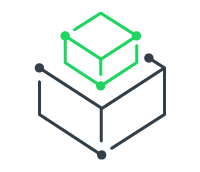InstallShield includes a Microsoft App-V Assistant to assist you in building an App-V package. The basic steps are as follows:
1. Specifying Package Information and Deployment Options
When you are creating an App-V application, the first step is to specify the package name, root folder name, and enter a comment on the Package Information page. You also specify any operating system requirements, identify the deployment server, and specify whether to include diagnostic tools with the virtual package.
2. Managing Files in an App-V Application
InstallShield shows you all of the files and folders that are currently in your App-V application and makes it easy to add or delete files and folders as needed.
3. Setting Isolation Options for Folders and Files
You can set isolation options to control application compatibility and accessibility. The isolation option that is assigned to a file or folder specifies how the isolation environment will provide access to system resources requested by the application. Isolation options for files and folders are always inherited. The App-V isolation environment will apply the most specific reference to that resource.
4. Modifying Shortcuts to the App-V Application’s Executable Files
You define application shortcuts to enable users to launch an App-V application from within the virtual environment. By default, InstallShield creates App-V applications for all of the executable shortcuts that exist in your project (or Windows Installer package). These shortcuts are listed in a checklist on the Applications page. Keep in mind that you must define at least one shortcut to enable users to launch the application from the isolation environment.
5. Modifying App-V Application Registry Settings
Using InstallShield, you can view existing registry keys, values, and data, and add or delete registry items in your App-V application. You can also set isolation options for selected registry keys.
6. Performing Dynamic Suite Composition
The point of application virtualization is to minimize the system dependencies that an application has on the underlying physical system. Many applications have common system dependencies on plug-ins or middleware, such as Adobe Reader or ODBC drivers. Dynamic Suite Composition (DSC) is a Microsoft Application Virtualization feature that enables applications to be virtualized separately from the plug-ins and middleware applications that they rely on, while still enabling them to communicate with those plug-ins and middleware applications within the virtual environment. The primary App-V application and the dependency App-V applications in the dynamic suite will run and interact with one another as if they were all installed locally on a computer. You would only need to deploy common system components once on each client, making them available for use by many App-V applications, rather than to include them with each of the App-V applications that are dependent upon them. This reduces redundancy in the local App-V cache and simplifies the construction and testing of the primary App-V applications.
7. Modifying Build Options
You can choose which releases of this InstallShield project you want to build an App-V application for when the project is built, and specify whether you want to include additional Windows Installer packages in the virtual package. Also, if you are editing a Windows Installer package in Direct Edit mode, you need to select the Build App-V application option on the Build Options page before you will be able to build an App-V application for that Windows Installer package.
8. Building an App-V Application
If you are building an App-V package for an InstallShield project, then the output of the build is the main Windows Installer setup package, the App-V package, and optionally another Windows Installer package meant for doing standalone deployment of your App-V package without the need for the App-V server infrastructure. If you are building an App-V package directly from the main Windows Installer setup package, then you get same as above minus the main setup package since it already exists.
9. Testing an App-V Application Using the App-V Application Launcher
You can use the InstallShield App-V Application Launcher to locally test a newly built App-V application. The App-V Application Launcher is a convenient testing tool that makes it possible for you to reliably and accurately test your App-V applications on your local machine or any other system that has the App-V client installed before moving it to the App-V server.


